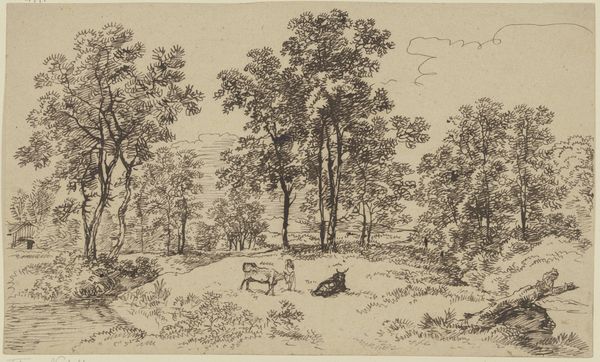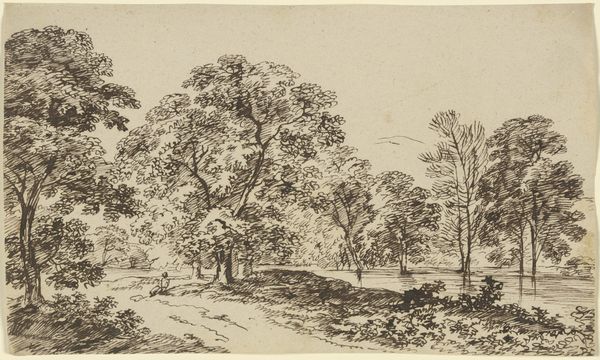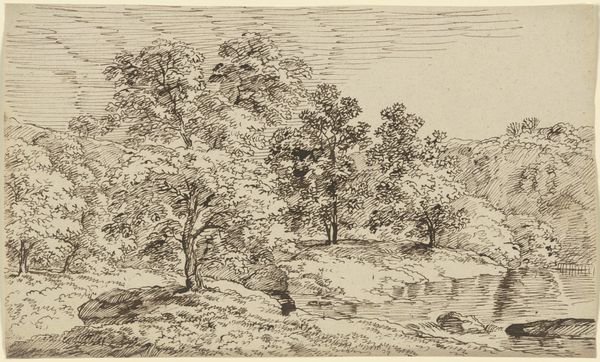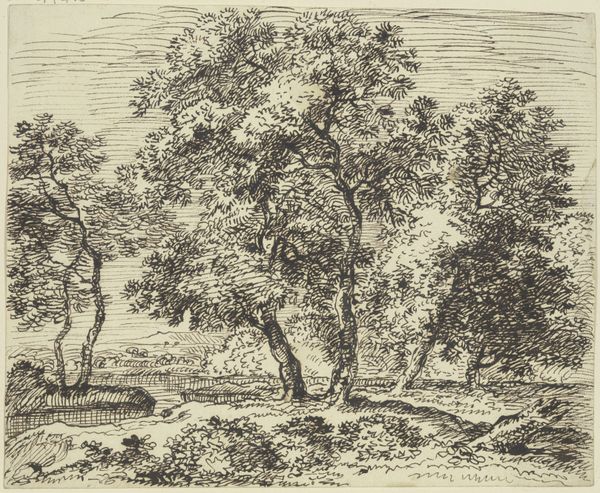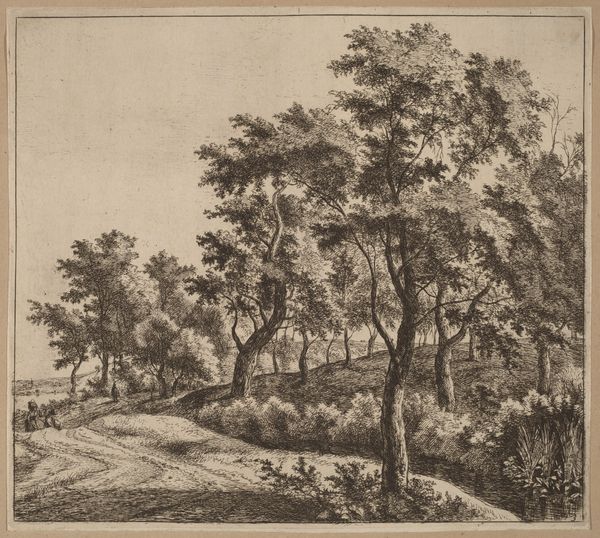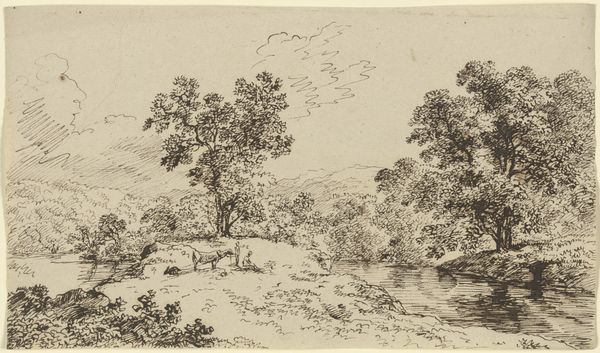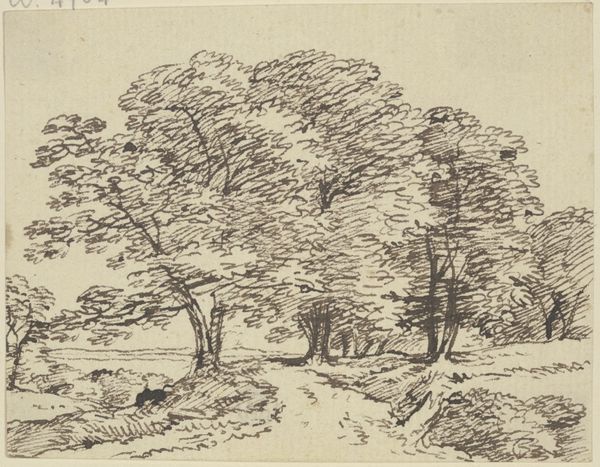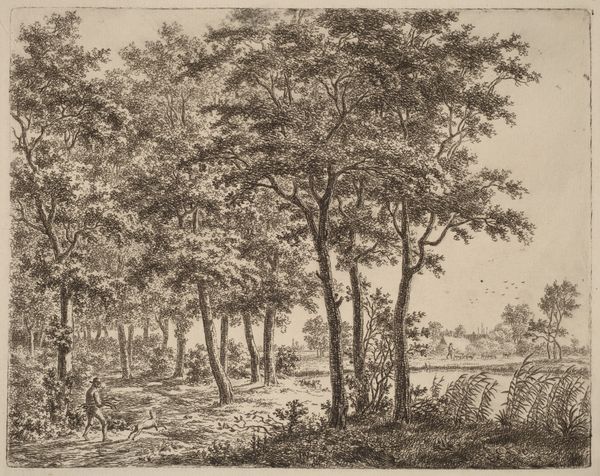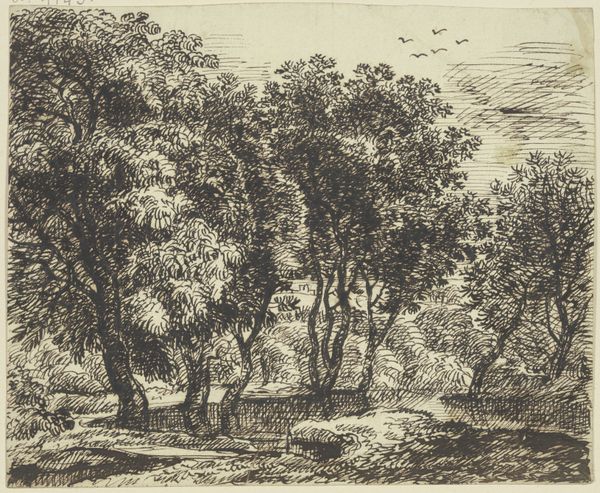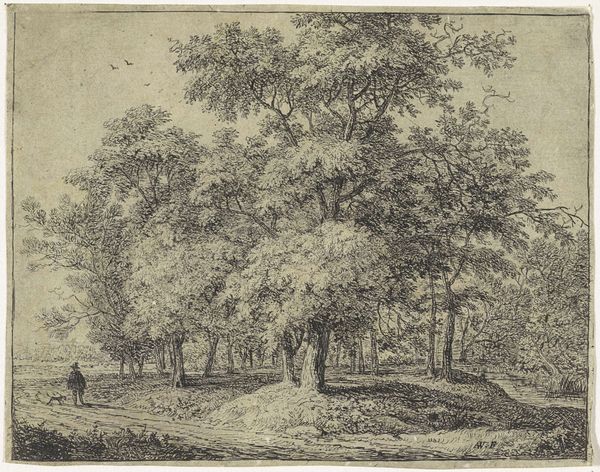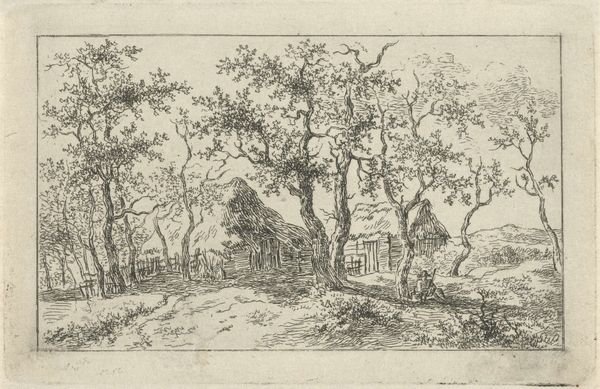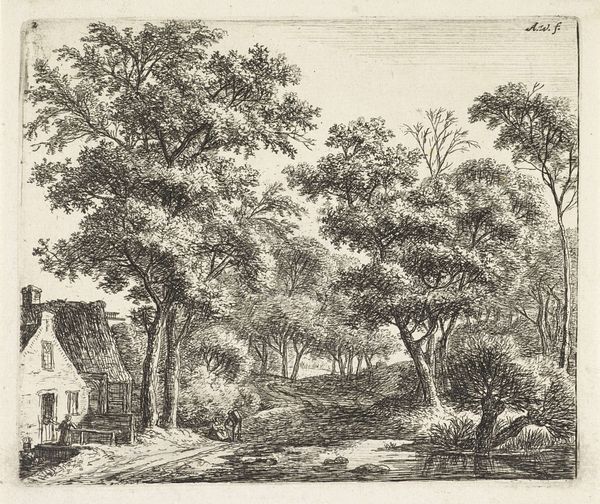
drawing, etching, paper, ink
#
drawing
#
etching
#
landscape
#
etching
#
paper
#
ink
#
romanticism
#
northern-renaissance
Copyright: Public Domain
Curator: This is "Huts between trees" by Franz Kobell. It is an etching rendered in ink on paper, residing here with us at the Städel Museum. Editor: My first impression? A secluded stillness. The trees create this intimate enclosure around these rustic buildings. The marks of the etching, even, feel very organic, mimicking the textures of bark and leaves. Curator: Absolutely. As an etching, think of the physical labor involved – the precise carving into a metal plate, the acid bath, the layering of ink and its eventual transfer onto paper. It moves us away from idealised landscapes toward understanding art as the outcome of deliberate manual processes. This aligns it with the values that elevate craft traditions. Editor: That resonates deeply. What stories do these humble huts tell us? Perhaps they were the dwellings of those laboring the land, caught within socio-economic systems of their time. This contrasts with the often romanticized, idealized images of pastoral life that conceal the toils of laborers and their marginalization from mainstream society. Curator: Exactly! Kobell’s focus isn’t on grandeur but on rudimentary shelters that serve very basic, fundamental needs. How were these constructed? What kind of skill, resources, and cooperative labour might have been involved? These are the considerations I have when looking at a landscape. Editor: There is a distinct social undertone when considering art rooted in nature; often the nature we wish to preserve or exploit, right? It serves as a mirror reflecting cultural attitudes toward class and ownership, revealing whose voices get amplified while others become hushed. This isn’t just scenery—it is a space imbued with the echoes of human experience. Curator: I would also add the role of commerce to that, since etchings and engravings were part of a print market, made for wider dissemination of images for teaching and pleasure, outside of unique luxury artworks destined for wealthy private owners. Editor: It’s a powerful reminder that what we consider “landscape” isn’t just an image of tranquility or aesthetic appeal; it’s embedded with socio-economic power structures. Thanks for prompting that material context; it deepens the understanding. Curator: My pleasure! It's always enriching to look at a seemingly placid landscape and excavate the many processes it both hides and reveals about how we value work.
Comments
No comments
Be the first to comment and join the conversation on the ultimate creative platform.
